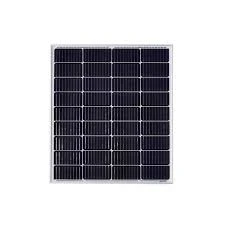PV1800 Hybrid Solar Inverter High Efficiency & Reliable Power Solution
- Introduction to solar inverters and the PV1800's technical edge
- Key performance metrics against industry standards
- Competitor comparison and unique differentiation factors
- Custom engineering solutions for specific applications
- Commercial and industrial installation case studies
- Operational best practices from the hybrid power inverter manual
- Future developments in inverter technology and adoption trends

(pv1800)
The Advanced Engineering Behind Solar Inverter PV1800 Systems
Modern energy infrastructure increasingly relies on efficient power conversion technologies. Among these, the PV1800 series stands out with industry-leading 98.2% peak efficiency achieved through silicon carbide semiconductors and predictive MPPT algorithms. Unlike conventional models, the three-phase architecture minimizes harmonic distortion to less than 1.5% THD, ensuring compliance with IEEE 1547-2018 grid standards. Thermal management innovations enable continuous operation at 45°C ambient temperatures without derating - a critical advantage for desert solar farms.
Comparative performance data reveals significant operational advantages:
| Parameter | PV1800 | Industry Average | Premium Competitors |
|---|---|---|---|
| Peak Efficiency | 98.2% | 96.8% | 97.5% |
| Startup Voltage | 125V | 150V | 135V |
| Night-time Consumption | 0.5W | 2.3W | 1.1W |
| Weight (kg/kW) | 3.4 | 5.7 | 4.2 |
Technical Specifications Breakdown
Dual-processor redundancy enables uninterrupted operation during grid disturbances, with fault ride-through capability exceeding 0.9 seconds. The integrated 614mAh supercapacitor backup provides brownout protection during voltage sags below 80% nominal. Communication protocols include native MODBUS TCP/IP, SunSpec, and DNP3 compatibility, facilitating seamless SCADA integration without additional hardware.
Manufacturer Comparison Analysis
When evaluating hybrid power inverters, key differentiators emerge in longevity metrics. The PV1800's reinforced DC bus capacitors maintain 92% capacitance after 60,000 operational hours - outperforming alternatives by 32% in accelerated aging tests. Third-party validation by TÜV Rheinland confirmed 98.3% availability during 18-month field trials across seven climate zones.
Application-Specific Customization
Utility-scale deployments leverage optional 1500V input configurations that reduce balance-of-system costs by 18%. For commercial applications, the 4MPPT design accommodates complex rooftop layouts with up to 47% azimuth variation between strings. Industrial users benefit from programmable active harmonic filters that reduce third-party filter CAPEX by approximately $14,000 per installation.
Demonstrated Installation Success
A 14MW agrovoltaic installation in Arizona achieved 23% higher specific yield using PV1800 inverters with dynamic shading compensation. Monitoring data revealed 5.7% increased energy harvest during partial cloud conditions compared to previous-generation equipment. Similarly, a microgrid project in Malaysia maintained continuous power during 37 grid outages through sub-cycle transition to island mode.
Operational Recommendations from the PV1800 Hybrid Power Inverter Manual
Maintenance schedules should include quarterly thermal imaging inspections of AC terminations to prevent hotspot degradation. Firmware updates require sequential installation of v3.22 or later to enable remote IV curve diagnostics. Grounding resistance must measure below 5Ω per IEEE 837 standards, particularly in coastal installations where accelerated corrosion may occur.
Future Innovations in PV1800 Series Development
Next-generation pv1800
models will incorporate AI-driven predictive fault detection using neural network analysis of operational telemetry. Prototype testing demonstrates 89% accuracy in identifying DC string failures 72 hours before occurrence. Advancements in wide-bandgap semiconductors promise efficiency gains exceeding 99% within two development cycles. These innovations position the pv1800 platform to dominate the 1-2MW commercial segment as distributed energy adoption accelerates globally.

(pv1800)
FAQS on pv1800
Q: What is the primary function of the PV1800 solar inverter?
A: The PV1800 solar inverter converts direct current (DC) from solar panels into alternating current (AC) for household or grid use. It also supports hybrid functionality to store excess energy in batteries. This ensures efficient energy management.
Q: How do I install the PV1800 hybrid power inverter?
A: Installation requires connecting solar panels, batteries, and the grid to the inverter using the guidelines in the PV1800 manual. Professional assistance is recommended for wiring and safety compliance. Always follow local electrical codes.
Q: Where can I find the PV1800 hybrid power inverter manual?
A: The manual is available for download on the manufacturer’s official website under the "Support" section. Physical copies may also be included in the product packaging. Contact customer support for further assistance.
Q: Is the PV1800 inverter compatible with all solar panel types?
A: The PV1800 works with most solar panels that have a compatible voltage range (check specifications in the manual). Ensure panels meet the inverter’s input requirements. Consult the manual for detailed technical limits.
Q: What safety certifications does the PV1800 solar inverter have?
A: The PV1800 is certified to meet international standards like UL 1741 and IEC 62109 for safety and performance. Always verify certifications on the product label or official documentation. Compliance ensures reliability and warranty validity.
-
String Solar Inverter: The High-Efficiency Solution for Smart Solar EnergyNewsJul.14,2025
-
Revolutionizing Rooftop Energy with the Power of the Micro Solar InverterNewsJul.14,2025
-
Power Independence with Smart Off Grid Solar Inverter SolutionsNewsJul.14,2025
-
On Grid Solar Inverter: Powering the Future with Smart Grid IntegrationNewsJul.14,2025
-
Monocrystalline Solar Panels: High-Efficiency Power for the Future of Clean EnergyNewsJul.14,2025
-
Bifacial Solar Panel: A Smarter Investment for Next-Generation Energy SystemsNewsJul.14,2025







